Built on the humble grave of the fisherman of Galilee, the Basilica was built at the behest of Emperor Constantine around the year 320 A.D. It is situated on the Vatican Hill, not far from the Circus of Nero, the place where the first Apostle Peter suffered his martyrdom
Today’s Basilica, built over Constantine’s, is the expression of the will of the Popes of the Renaissance, who availed themselves of the work of the greatest artists of their time, such as Bramante, Michelangelo, Bernini and Maderno. Along a path of art, faith and spirituality, visitors will admire the magnificence of the building, walk down the naves, visit the chapels and admire the beauty of the works of art, which include Michelangelo’s Pietà. The visit to the tombs of the Popes in the Vatican Cellars is also not to be missed.
MEETING POINT
Opera Romana Pellegrinaggi Office located at Piazza Pio XII, No. 9 (near St. Peter’s Square). Please arrive at least 30 minutes before your scheduled time.
How to get to Saint Peter Square?

Since the Middle Ages a community of pilgrims, first from Europe then from the rest of the world, has undertook a more or less long journey to pray on the tomb of the Prince of the Apostles.
An adventurous and often dangerous journey on not always safe roads.
Today those who come to Rome can use very different means of transportation, but the sense of wonder at the sight of the Basilica is still the same.
Believers and non-believers alike cannot help being left speechless by the beauty and harmony this sacred place radiates.
A place into which the ultimate all-time geniuses of architecture, painting and art have placed all their talent to raise a chant to God and attract visitors to a small Heaven on Earth.
hide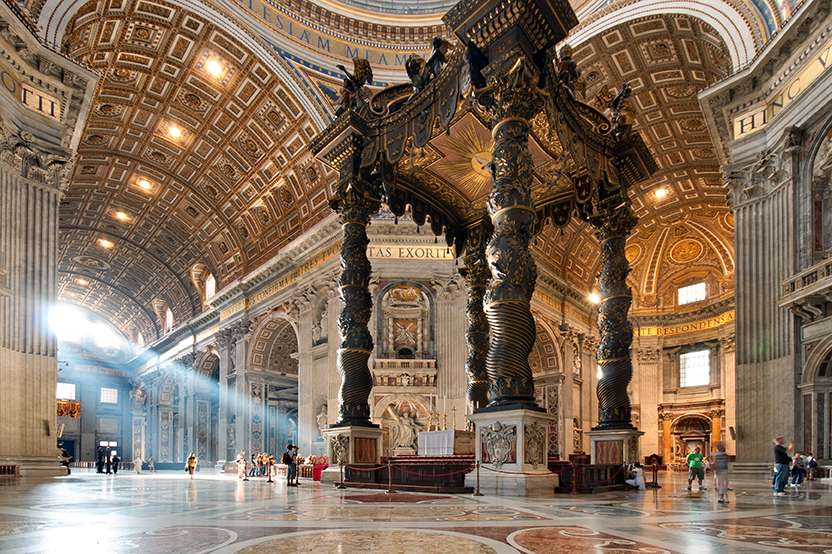
The Basilica offers visitors an itinerary rich in history, art and spirituality.
Each stone, even the tiniest, has a story to tell, and to know them all would probably take weeks, if not months.
Here are some tips according to the time you are able or wish to dedicate to your tour.
If you only have an hour or so, walk along the main nave up to the Altar of Confession: here you will be able to see the bronze statue of Saint Peter, the Confession of Saint Peter, the Papal Altar, Bernini’s Baldachin, the vision from inside of the majestic Dome and the 4 statues of the great pillars that support it. Then proceed towards the Apse to admire the Throne of Saint Peter and the Glory of the Holy Spirit.
After this, you may go down to visit the Vatican Grottos, where you will be able to see the Niche near which Saint Peter’s Tomb is located along with the tombs of several other Pontiffs. On your way out, in a chapel near the entrance, you will be able to admire Michelangelo’s Pietà. If you have more time, in addition to the itinerary just described, we suggest admiring the chapels and monuments on the aisles of the Basilica, all rich in art and history.
hide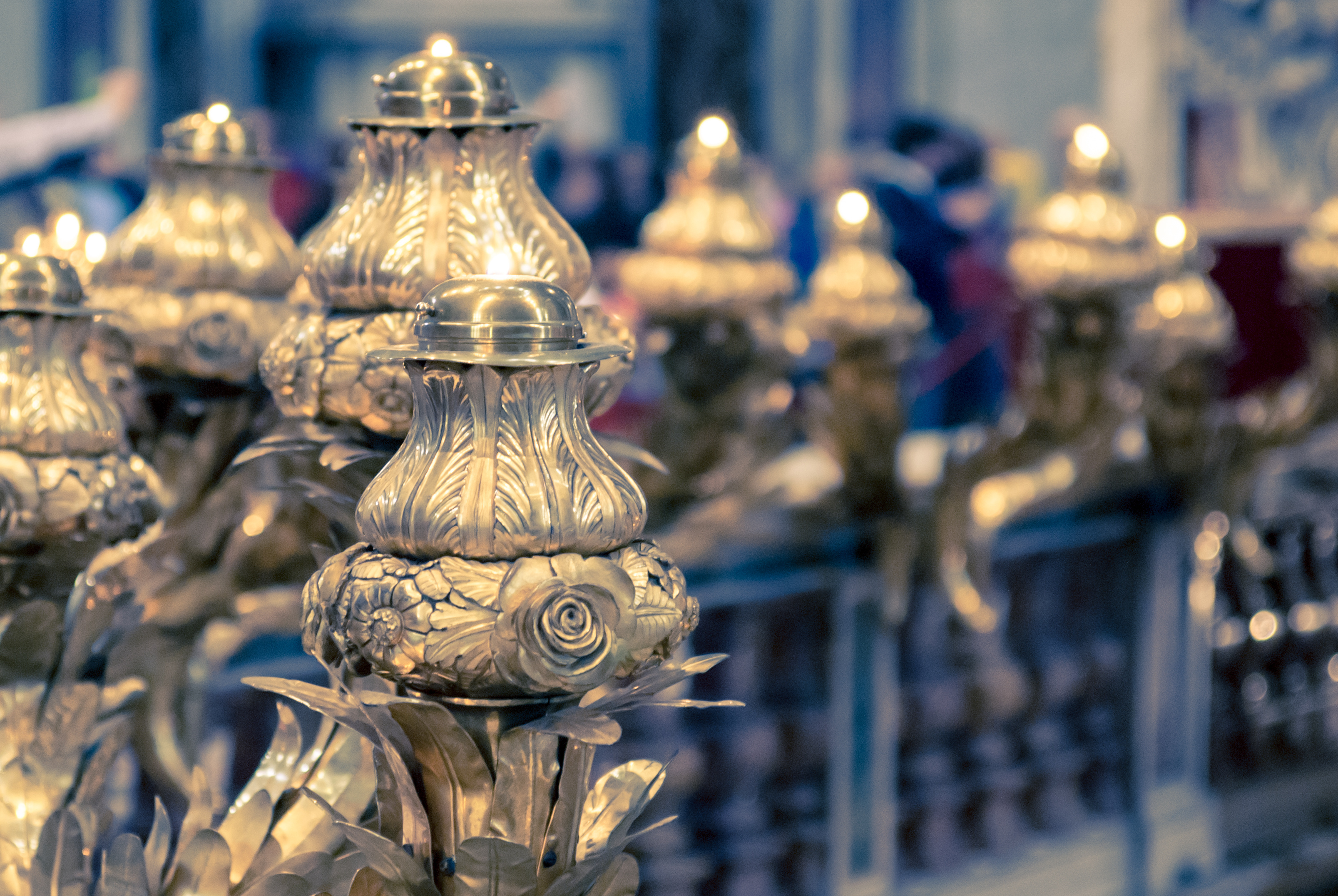
The Confession is the founding nucleus of the church: the location of Peter’s tomb. This is where pilgrims and faithful from all over the world come to confess their faith, reciting the “Creed”. An exedra circumscribed by a balustrade opens up in front of the altar with lamps in gilded bronze burning permanently as symbols of the faith and love of the Christian people. Looking downwards, at the centre of the wall, a rich gilded gate with the statues of the saints Peter and Paul on the sides leads to the sacellum, the shrine containing the tomb of Saint Peter.
Further up, we can see the Papal Altar, from where only the Supreme Pontiff, or a person designated by him, may officiate.
But now our eyes turn to the baldachin covering the altar. It is a work of extreme beauty and audacity produced in 1624 by Gian Lorenzo Bernini, commissioned by Pope Urban VIII Barberini.
The baldachin is 28 metres tall and weighs 30 tons.
hide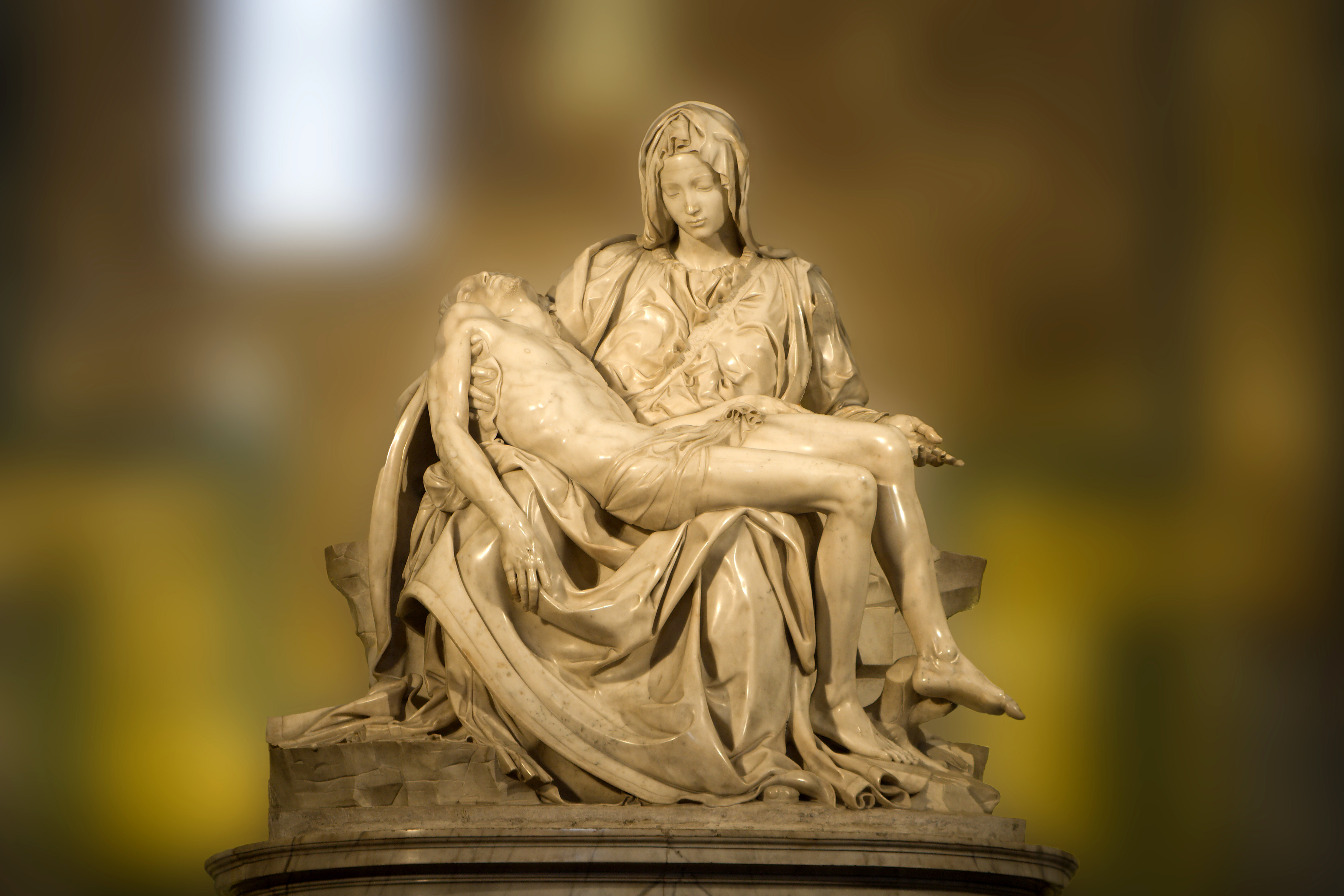
Michelangelo’s Pietà is one of the best-known and most valuable statues of western art. The artist sculpted it when still in his early twenties and represented one of his earliest commissions by the Papal court.
We can be certain that the group is the work of Michelangelo because this is the only one of his works that he actually signed.
To represent the Piety, more than by the iconography of the Middle Ages or of the Italian Renaissance, Michelangelo was inspired by an imagery very popular in Northern Europe that depicted the Virgin Mary with the face of an older woman with the body of Christ laid down from the cross on her lap.
Michelangelo gave the topic an entirely new and upsetting interpretation.
He gave the Virgin a very youthful look, totally deviating from the tradition that represented an ageing Mary.
Instead, Christ and Mary seem to have the same age, with the latter depicted as youthful as when she conceived Christ. This choice by Michelangelo caused considerable clamour at the time.
hide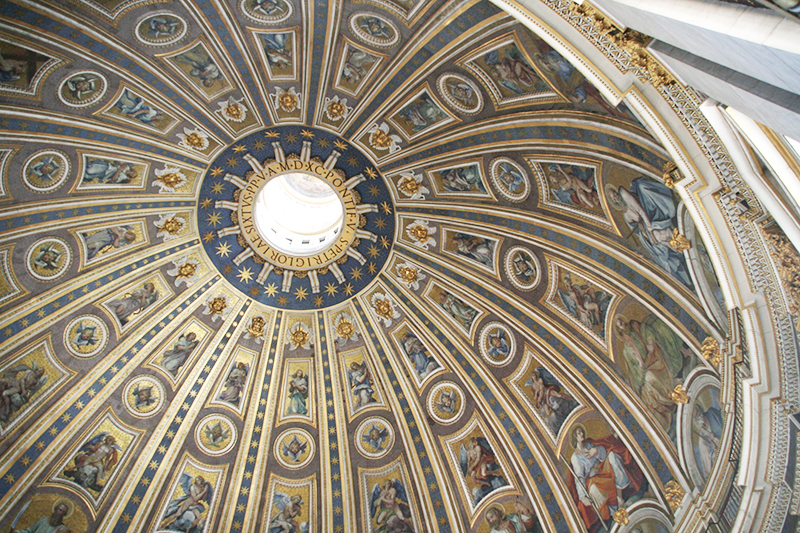
The Dome is like a Te Deum, a hymn of gratitude to God and a prefiguration of Paradise.
A harmonious sequence of rings presents in sequence the four evangelists, the patriarchs and the bishops. Christ, king and judge, is with the Virgin Mary, John the Baptist, Saint Paul and the twelve apostles.
The angels, arranged according to the celestial hierarchy, follow in concentric circles, all the way to the cherubs and the seraphs, the closest to the throne of God.
A final ring of gilded stars on a blue sky introduces us to the bright eye of the lantern, where we find God the Father.
Four pillars, 45 metres tall, are the powerful supports of the great cupola and on which the naves, aisles and the transept are based.
The bases of the pillars feature large niches with huge statues containing some of the most sacred relics in the Vatican Basilica.
The statue of Saint Longinus, the Roman centurion who cut open the rib cage of Christ, contains remains of the Holy Lance. The statue of Helena, mother of Constantine, contains remains of Christ’s Cross found in Jerusalem in the 4th century.
That of Saint Veronica protects the veil which she used to dry the face of Christ on the road to Calvary.
And, finally, the statue of Saint Andrew, brother of Peter, enshrines relics of the cross on which he was martyrized in Greece
hide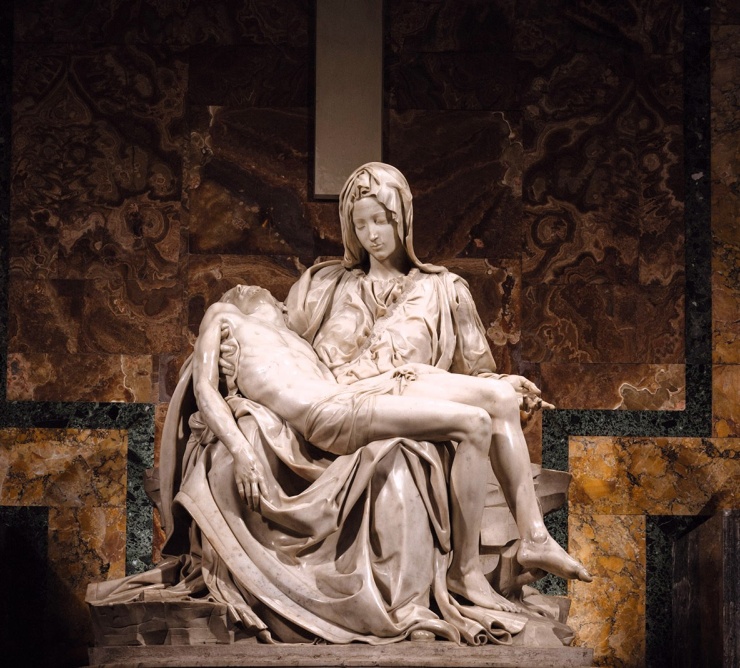
A special itinerary for those seeking both an aesthetic and spiritual experience, beginning with St. Peter’s Basilica.
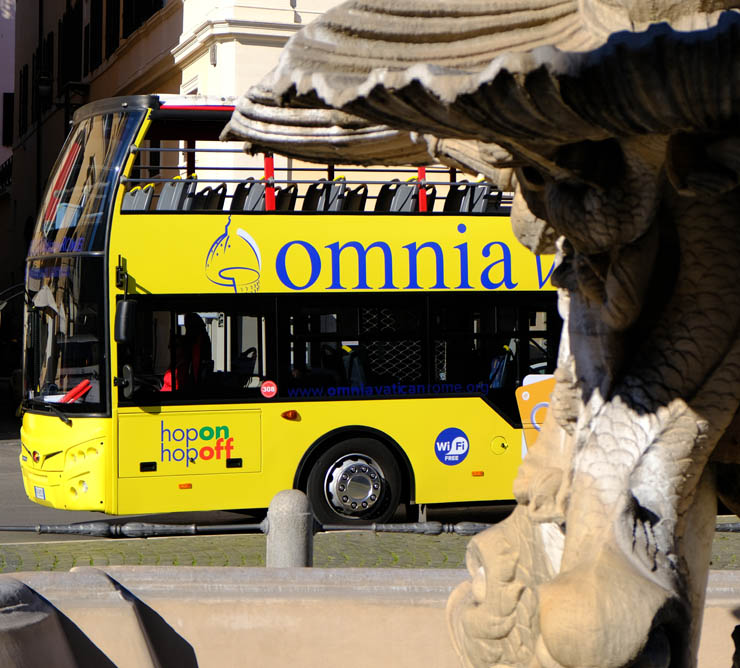
Discover the Eternal City aboard our unmistakable yellow Vatican&Rome Open Bus and explore new routes. Comfortably seated and with a multilingual audio guide system, you can look at the Eternal City from another point of view. An experience loved by adults and children.